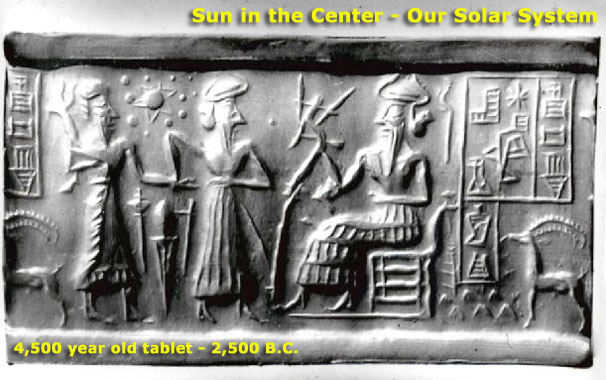



Het lijkt een combinatie van pseudo wetenschap en antieke sumerische mythologie

Nibiru - WikiPedia
hier zijn een paar Nibiru filmpjes te bekijken:Er zijn tegenwoordig meer en meer mensen die geloven in het verhaal van de Annunaki, afkomstig van de planeet Nibiru. Veelal wordt het verhaal gezien als een alternatief bijbelverhaal of een mythe. Voor sommige mensen die wel in Nibiru geloven, bestaat God niet. God is voor hen niets anders dan een term voor Annunaki ofwel: buitenaardse bezoekers/goden. Voor hen verklaart de kruising tussen een Annunaki en een aap het ontstaan van de mens op aarde. Graancirkels, zo denken de gelovigen, zijn een teken van de Annunaki. En hoe meer graancirkels, hoe groter de kans dat de Annunaki terugkeren naar de aarde. In 2004 zond de RVU een programma uit onder de titel In den beginne waarin Bram Vermeulen de mythe toelicht aan de hand van kleitabletten.
BREAKING NEWS 06-06-07-NIBIRU
NIBIRU 2
SUPERDAN - NIBIRU Part1
SUPERDAN - NIBIRU Part2
SUPERDAN - NIBIRU Part3
Are you Ready? 3
In de Washington Post schijn in 31-Dec-1983 het volgende opmerkelijke bericht te hebben bevat:
hier is een opmerkelijke pagina uit de 1987 "New Science and Invention Encyclopedia" waarop een "een dode ster" te zien in in relatie met ons zonnestelstel.Washington Post schreef:A heavenly body possibly as large as the giant planet Jupiter and possibly so close to Earth that it would be part of this solar system has been found in the direction of the constellation Orion by an orbiting telescope aboard the U.S. infrared astronomical satellite. So mysterious is the object that astronomers do not know if it is a planet, a giant comet, a nearby "protostar" that never got hot enough to become a star, a distant galaxy so young that it is still in the process of forming its first stars or a galaxy so shrouded in dust that none of the light cast by its stars ever gets through. "All I can tell you is that we don't know what it is," Dr. Gerry Neugebauer, IRAS chief scientist for California's Jet Propulsion Laboratory and director of the Palomar Observatory for the California Institute of Technology said in an interview.
The most fascinating explanation of this mystery body, which is so cold it casts no light and has never been seen by optical telescopes on Earth or in space, is that it is a giant gaseous planet, as large as Jupiter and as close to Earth as 50 billion miles. While that may seem like a great distance in earthbound terms, it is a stone's throw in cosmological terms, so close in fact that it would be the nearest heavenly body to Earth beyond the outermost planet Pluto. "If it is really that close, it would be a part of our solar system," said Dr. James Houck of Cornell University's Center for Radio Physics and Space Research and a member of the IRAS science team. "If it is that close, I don't know how the world's planetary scientists would even begin to classify it."
The mystery body was seen twice by the infrared satellite as it scanned the northern sky from last January to November, when the satellite ran out of the supercold helium that allowed its telescope to see the coldest bodies in the heavens. The second observation took place six months after the first and suggested the mystery body had not moved from its spot in the sky near the western edge of the constellation Orion in that time. "This suggests it's not a comet because a comet would not be as large as the one we've observed and a comet would probably have moved," Houck said. "A planet may have moved if it were as close as 50 billion miles but it could still be a more distant planet and not have moved in six months time.
Whatever it is, Houck said, the mystery body is so cold its temperature is no more than 40 degrees above "absolute" zero, which is 459 degrees Fahrenheit below zero. The telescope aboard IRAS is cooled so low and is so sensitive it can "see" objects in the heavens that are only 20 degrees above absolute zero. When IRAS scientists first saw the mystery body and calculated that it could be as close as 50 billion miles, there was some speculation that it might be moving toward Earth. "It's not incoming mail," Cal Tech's Neugebauer said. "I want to douse that idea with as much cold water as I can."
In a section on space probes, the encyclopedia shows the paths of the 2 Pioneer probes and illustrates how the probes were used in the search for more planets. It shows the Earth, the Sun, a dead star (at 50 billion miles or 538 AU) and a tenth planet (at 4.7 billion miles or 50 AU).





 Hebr 6:
Hebr 6: 